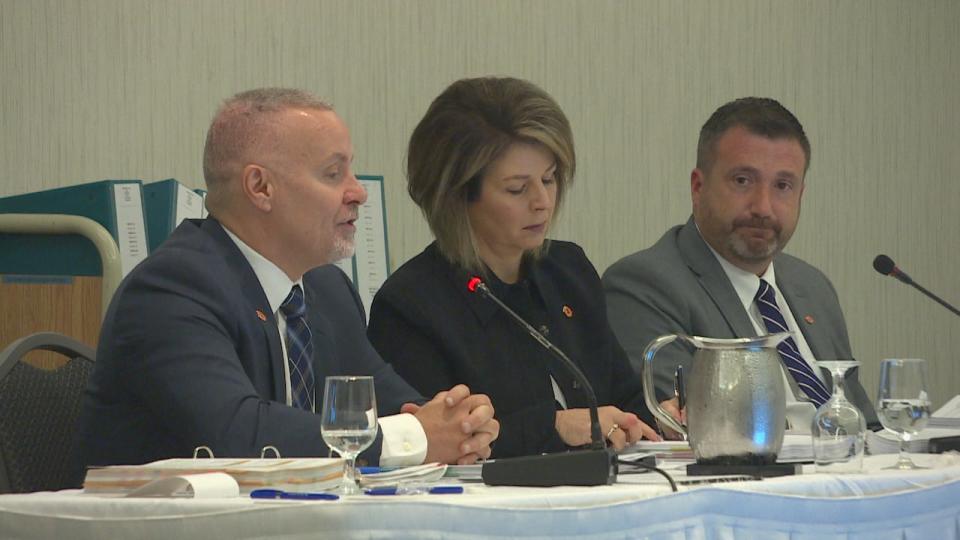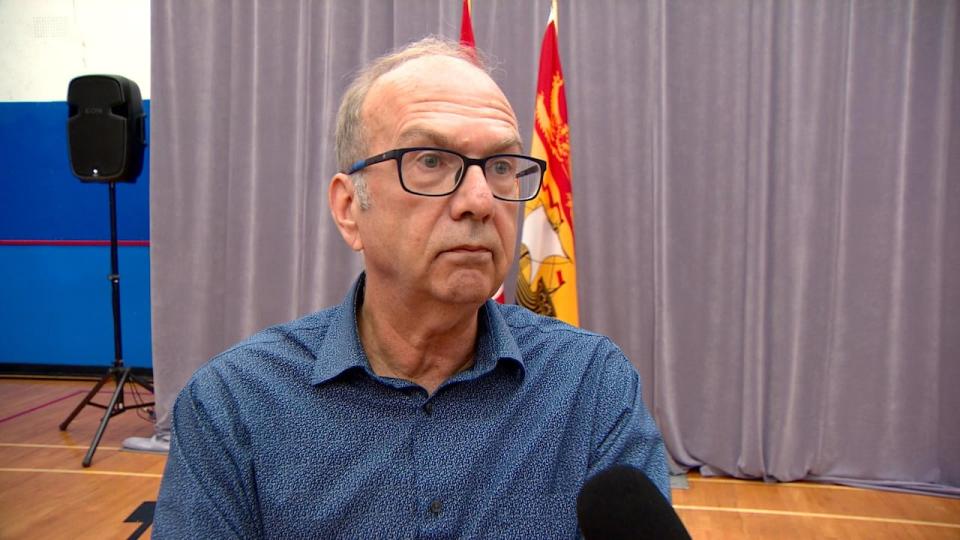Subsidies to New Brunswick pulp and paper mills increasing to soften electricity rate hikes
N.B. Power's application for a pair of steep rate hikes is forcing it to pay higher subsidies to pulp and paper mills this year and next year to help the plants cope with the increases.
But the utility says it is not allowed to provide similar relief to any other customers who might be in need, including low-income households.
"Rightly or wrongly, that's my understanding of the Electricity Act," said Brad Coady, N.B. Power's vice-president of strategic partnerships and business development, at the utility's ongoing rate hearing.
N.B. Power has applied to raise rates by an average of 9.25 per cent per year over the next two years, including 9.8 per cent on residential and large industrial customers. That application is being reviewed by the New Brunswick Energy and Utilities Board.
Under questioning by the Human Development Council's Randy Hatfield, and later by Energy and Utilities Board lawyer Abigail Herrington, Coady said electricity aid programs, like the rebates for people with low incomes that are available in Ontario, are not something N.B. Power is allowed to provide in New Brunswick.
"Paying for subsidies for any one customer has to be funded from collecting revenue from a different customer," said Coady.
"And so we would effectively have raised rates for the non-participating customers in such a program to pay for the participating customers in that program."

But restrictions on subsidising power costs do not apply in one case.
In evidence presented at the hearing, N.B. Power has outlined plans to spend $26.3 million over the next two years to help pulp and paper mills with their electricity costs.
It is a 36 per cent increase over the previous two years.
The subsidy, called the Large Industrial Renewable Energy Purchase Program, involves N.B. Power buying renewable electricity generated by the mills at high prices and reselling it back at low prices.
This year the utility is paying mills $120.57 per megawatt hour for their electricity production, most of it generated from burning wood waste. N.B. Power resells it back at $73.13, usually with none of the power ever leaving the mill.

The $47.44 per megawatt hour price difference is a new high and will apply to the buying and selling of an estimated 265,610 megawatt hours of electricity this year.
Hatfield asked how that program is possible if N.B. Power is barred from providing relief to others.
"Is that not a subsidy?" asked Hatfield. "That is ratepayer-funded right? That comes from ratepayer contributions?"
Coady agreed all N.B. Power customers pay for the mill discounts but said the New Brunswick government has enacted regulations that require the subsidies to be paid, and the utility is following those rules.
"It is not New Brunswick Power that's driving the [large industrial renewable energy] purchases," said Coady.

"We are complying with the terms of the regulation, and qualifying renewable energy is being produced and sold to the utility under that regulation."
N.B. Power has programs to help low-income customers reduce their electricity consumption by helping to finance better insulation, energy-efficient windows and install heat pumps, but those programs are aimed at people who own their own homes.
Hatfield said help for tenants to deal with rising electricity costs, on top of rising rents, is missing and causing hardship.
In Ontario that problem is dealt with by a government program that pays low-income households between $45 and $113 per month in energy rebates, depending on consumption amounts, income levels and the number of people living in a location.
Coady agreed New Brunswick has little help to offer those on low and moderate incomes who are tenants and find two large increases in power rates difficult to absorb.
"Energy poverty is real," said Coady.
"It is incredibly difficult to get to renters. The utility works with the community and with renters to overcome those obstacles and barriers but it is a hard one to overcome.


